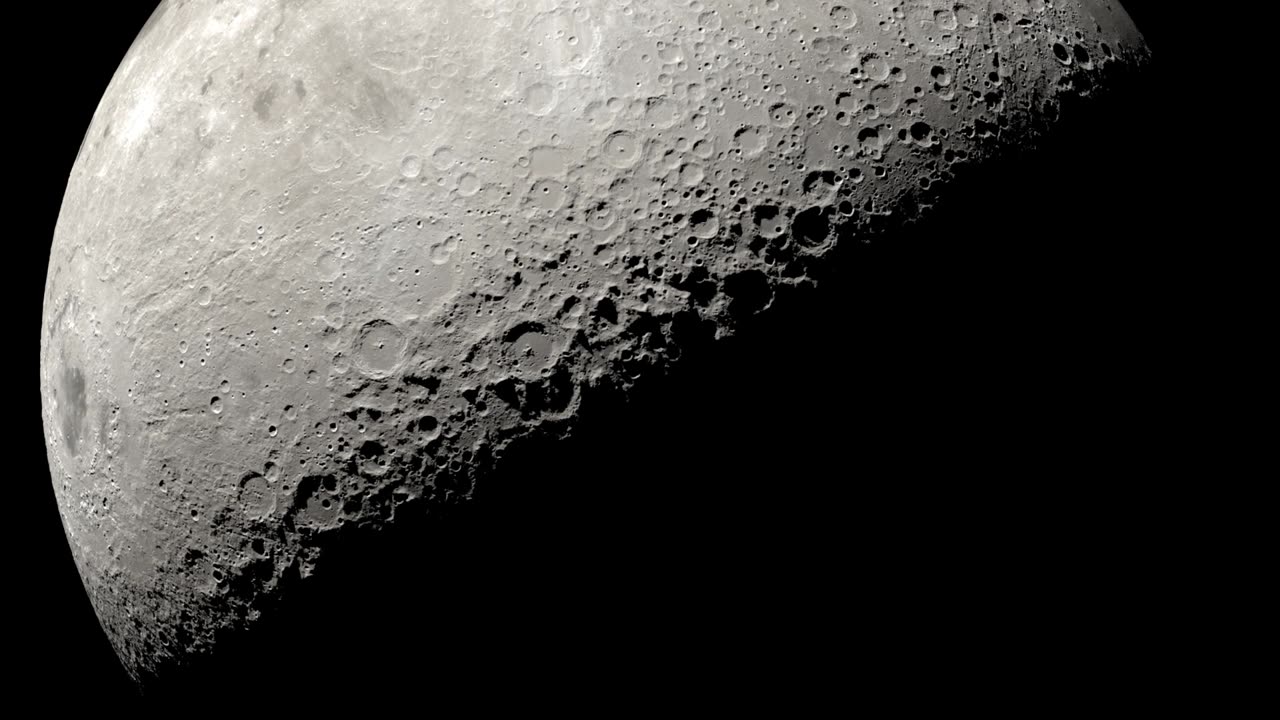Premium Only Content

Shadows near the Moon's South Pole
NASA's Scientific Visualization Studio
Published: April 7, 2021
At the Moon's North and South Poles, the Sun is never more than 1.5° above or below the horizon. The resulting pattern of daylight and shadows is unlike anywhere else on the Moon — or on Earth. After zooming in on a small lunar highland area near the South Pole, this visualization recreates the illumination conditions there over a period of two lunar days, equal to two months on Earth.
This close to the pole, the Sun doesn't rise and set. Instead, as the Moon rotates on its axis, the Sun appears to skim the horizon, traveling a full 360 degrees around the terrain. Mountains as far as 75 miles (120 kilometres) away cast shadows across the landscape. With the Sun at such a low angle, its light can never reach the floors of some deep craters. Places that sunlight never reaches are known as permanently shadowed regions. These are some of the coldest spots in the solar system, and because of that, they trap volatile chemicals, including water ice, that would immediately sublimate (transform directly from a solid to a gas) in the harsh, airless sunshine that illuminates most other places on the Moon.
The Sun appears to travel in a circle at the Earth's poles, too, but it also travels through a range of altitudes. From spring equinox to summer solstice, for example, the Sun seems to climb higher in the sky, reaching an altitude of 23.4°. It only hugs the horizon for a few days around the equinoxes. At the Moon's poles, the Sun is always near the horizon, and the shadows are perpetually long, sweeping across the lunar surface with the changing solar azimuth.
Download more versions at: https://svs.gsfc.nasa.gov/4893
Music Provided by Universal Production Music: "Two Horizons" – Anthony d’Amario
-
 1:24:40
1:24:40
Kim Iversen
10 hours agoJeffrey Sachs Just Exposed the Truth They Don’t Want You to Hear
33.4K39 -
 2:11:32
2:11:32
Glenn Greenwald
8 hours agoGlenn From Moscow: Russia Reacts to Trump; Michael Tracey Debates Ukraine War | SYSTEM UPDATE #413
123K86 -
 2:19:23
2:19:23
Slightly Offensive
8 hours ago $12.11 earnedGOV. RAMASWAMY? Vivek to import 1 BILLION INDIANS to OHIO | Nightly Offensive
27.5K17 -
 4:51:08
4:51:08
Wahzdee
11 hours agoSniper Elite Then Extraction Games—No Rage Challenge! 🎮🔥 - Tuesday Solos
64.5K3 -
 2:12:58
2:12:58
Robert Gouveia
11 hours agoSenator's Wife EXPOSED! Special Counsel ATTACKS; AP News BLOWN OUT
101K41 -
 55:07
55:07
LFA TV
1 day agoDefending the Indefensible | TRUMPET DAILY 2.25.25 7PM
33.7K20 -
 6:09:26
6:09:26
Barry Cunningham
17 hours agoTRUMP DAILY BRIEFING - WATCH WHITE HOUSE PRESS CONFERENCE LIVE! EXECUTIVE ORDERS AND MORE!
155K50 -
 1:46:37
1:46:37
Game On!
12 hours ago $7.12 earnedPUMP THE BRAKES! Checking Today's Sports Betting Lines!
83.1K3 -
 1:27:21
1:27:21
Redacted News
11 hours agoBREAKING! SOMETHING BIG IS HAPPENING AT THE CIA AND FBI RIGHT NOW, AS KASH PATEL CLEANS HOUSE
227K280 -
 1:08:28
1:08:28
In The Litter Box w/ Jewels & Catturd
1 day agoCrenshaw Threatens Tucker | In the Litter Box w/ Jewels & Catturd – Ep. 749 – 2/25/2025
137K64